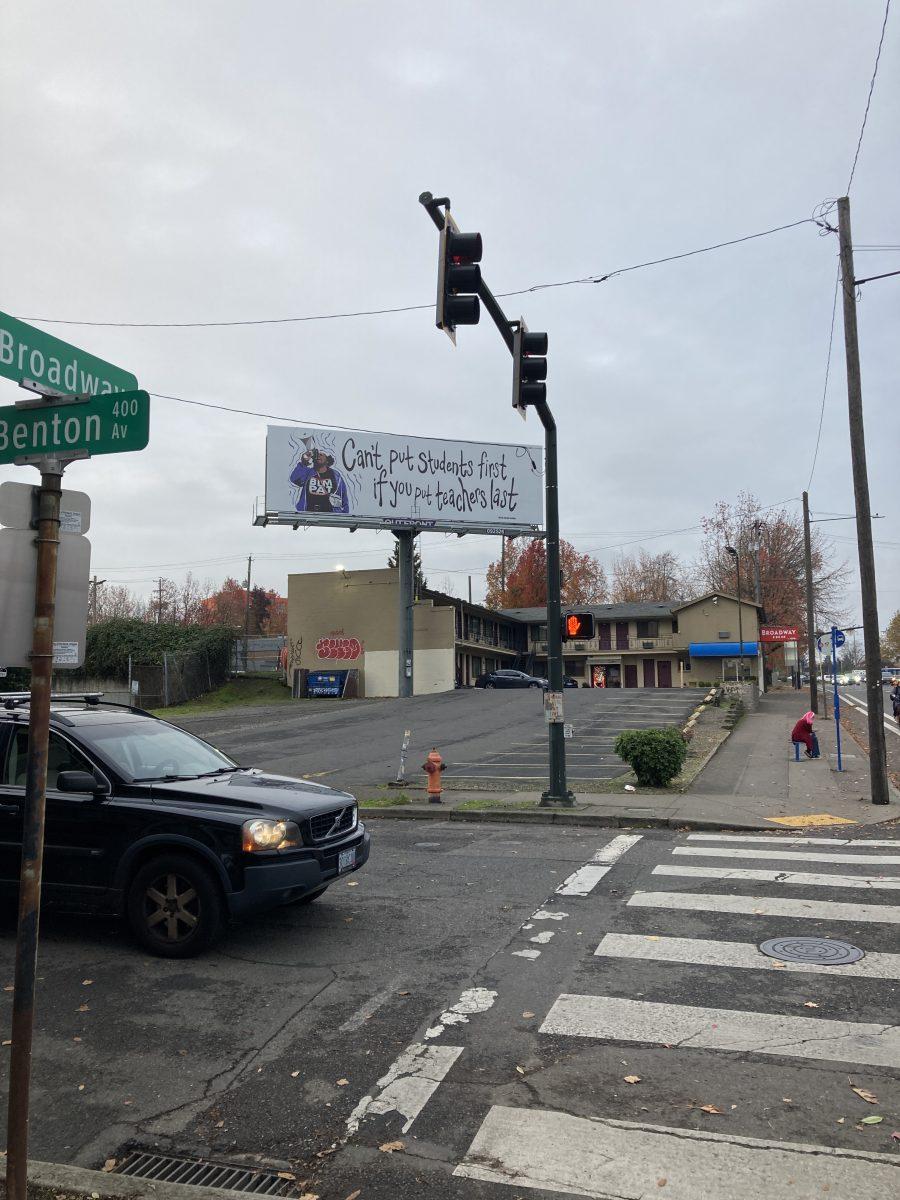
Grant High School students returning to in-person learning in early September were met with overcrowded classrooms as the school struggles to accommodate the largest student population enrolled in recent history. The roughly 2,200 person student body far exceeds the newly renovated building’s 1,700 student capacity. The crowding is especially challenging during the COVID-19 pandemic, where students and staff are required by Portland Public Schools to maintain three feet of distance “to the extent possible.”
Grant administration attributes increased enrollment to the school’s newly remodeled campus and sought after programs. “Students want to come here,” says Vice Principal Robyn Griffiths. “We’ve got art that a lot of schools don’t have. We’ve got music. We have sports. We have so many different clubs. So it’s a very appealing place for people to come.”
Griffiths also says that the ongoing renovation of Benson High School’s campus might have contributed to increased enrollment at Grant. Benson classes are currently held at the Marshall High School building. “I think their numbers went down for their 9th graders because people don’t want to have to travel all the way out to that campus,” says Griffiths.
But this growing enrollment can impact learning. Larger class sizes limit the time and attention teachers are able to give individual students. Freshman core curriculum teachers, who collectively instruct a 620 person freshman class, especially feel this burden.
“It’s really important for me to give authentic feedback on student writing,” says freshman English teacher Stehanie D’Cruz. “I have 160 students. If I spent just three minutes on an assignment or a piece of their writing — and I could never give real feedback on an essay in three minutes — (that would amount to) 8 hours of feedback time which I actually do not have in my day. And that’s just one little assignment.”
D’Cruz says that her freshman students need extra support readjusting to in-person learning, which they have not experienced since 7th grade due to COVID-19. That support is difficult to give in overcrowded classrooms. “I just think, of all years, it’s like the worst year to have huge classes of 9th graders,” she says.
Students feel that making connections with teachers is also difficult in crowded classes. “I think the teachers are doing the best they can … trying to make the students feel included, but it is hard when there’s so many kids that (the teachers) can’t really get to everyone,” says sophomore Ella Meyer. “There are just a lot of students, so they get less teacher-on-student attention, like one-on-one.”
Beyond its effect on education, overcrowding limits the student body’s ability to socially distance, an important step in preventing the spread of COVID-19. Classroom spaces cannot support three-foot distancing. “It physically can be impossible at times, with these many students to maintain that distance,” says Vice Principal Griffiths. Students also crowd in hallways and staircases moving between classes. “(Distancing is) definitely impossible a lot of the time, especially on the main stairwell or really any stairwell. You’re inches within people,” says Meyer. These issues raise questions about the safety of in-person learning.
There is little indication overcrowding at Grant will lessen anytime soon. According to Vice Principal Griffiths, if the current rate of enrollment continues, the total number of Grant students will only increase. “Maybe with Benson opening up in a few years (with a renovated building), more students might tend to go to Benson because it’s close by as well. … But that’s going to be another three years from now,” says Griffiths.
Without clear plans to remedy the problems that come with Grant’s 2,200 student load, teachers, staff and students are forced to contend with crowding into the foreseeable future.
“It feels to me like at the district level or the school level, someone has given up the idea that we should try to maintain reasonable class sizes in high school in general. And that worries me,” says D’Cruz.









































